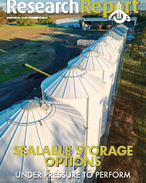This article is 5 years old. Images might not display.
The facility is a collaboration between the CSIRO and the University of Adelaide. It uses Atom Trap Trace Analysis (ATTA) and laser physics to count individual atoms of the noble gases, such as Argon and Krypton, that are naturally found in groundwater and ice cores.
The ATTA system can help researchers gain a better understanding of groundwater use and contamination and contribute to a more detailed understanding of the impact of climate change through measurements on Antarctic ice cores.
"Australia relies on its groundwater for 30 per cent of its water supply for human consumption, stock watering, irrigation and mining," said Professor Andre Luiten, Director of the University's Institute for Photonics and Advanced Sensing which houses the ATTA facility.
"With climate change and periods of prolonged drought, surface water is becoming increasingly more unreliable and the use of groundwater is rising. We need to make sure it's sustainable," Professor Luiten said.
"Because noble gases don't easily react chemically, they are the gold standard for environmental tracers to track groundwater movements.
"Before this new facility, researchers wanting to measure these ultra-low concentrations of noble gases had to rely on a very small number of overseas laboratories which can't meet demand for their services."
ATTA's analytic capability would also allow researchers to look further into the past of Antarctica's climate, building understanding of global environmental change.
CSIRO senior principal Research Scientist Dr Dirk Mallants said the new ATTA facility would enable researchers to determine the age of groundwater from decades and centuries up to one million years.
"This allows us to understand the sources of water, where it comes from and what the recharge rates are," Dr Mallants said.
"That then allows us to make decisions about sustainable extraction. This is critical where development of any kind might use or impact groundwater systems - from urban development where groundwater systems are used to supply communities, to agricultural and mining development.
"It will provide Australian researchers, government and industry with unique capability of collaboration on national water challenges."
The new ATTA facility is partially funded under the Australian Research Council's Linkage, Infrastructure, Equipment and Facilities scheme.























